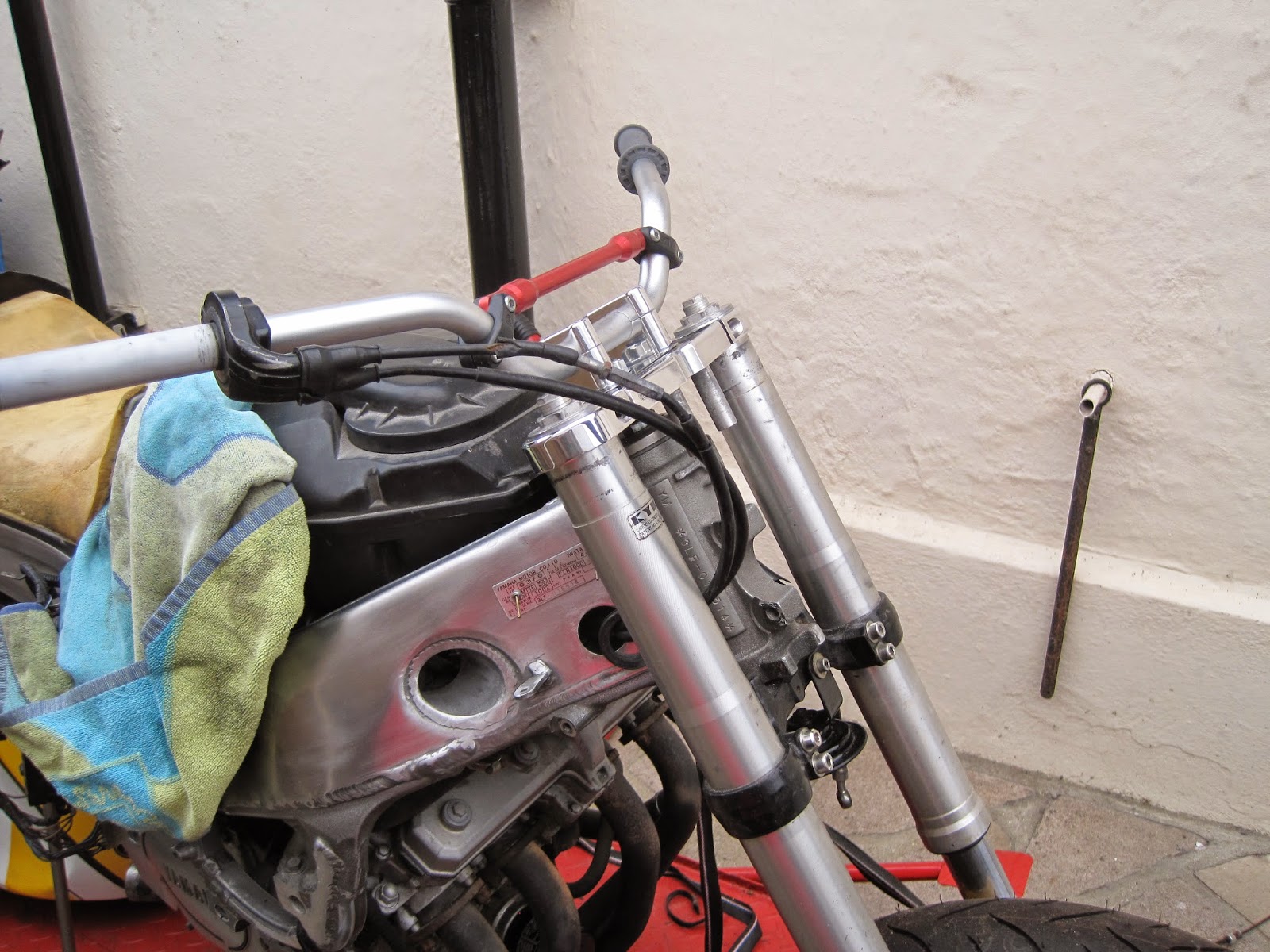After another crazy year at uni im finally home and ready to start from where I left off on the bikes!
Whils in Loughborough I collected tools online bit by bit and I now have pleanty of metal shaping tools which will be used to make a seat unit for the FZR1000 and then used on the tank of of honda benly for my next Cafe Racer, more of that later.
So work began with a good clean and cup of tea. Once I had remembered where I was with the EXUP, I immediately invested in a whiteboard to keep track of what needs to be done.
The following Jobs that are still yet to be completed are as follows:
-Chop subframe to make it smaller.
-Fabricate Seat hoop and unit. Plus brackets.
-Weld exhaust end can on.
-Polish frame and a few other bits.
-Rebuild Rear Caliper and mount.
-Source new swingingarm bearings and fit new swinging arm and shock.
-Fit handle bars.
-Bleed front calipers.
-Sort out electrics (Guages lights etc)
-Get seat foam made and covered (Viking Vinyls)
-Paint and finishing off.
I started by rubbing down and polishing everything. This proved to be a hard slow and tedious job. However now its coming to a finish all the hard work has definitely paid off.
The top yoke has a painted insert and polished risers. Along with a new set of renthal bars.
This is where the work starts with the rubbing down from 180 glass paper through to 1200.
The rear whell spindle sliders where polished to contrast with the black powder coating of the swinging arm. This is the shine you get after the first polish with black emery, this is followed up with brown, white, green and then blue soaps to get a mirror finish. Using progressively softer wheels of course.
The finished rear sliders, with new stainless adjusting bols and locking nuts.
The top yoke bolted togther just to make the bike easier to move. It will all have to comeapart aging when the grips and controls are added to the bars.
The air scoopes in the frame along with the engine mounts will be painted black to show off the polished frame.
I have smoothed down some of the welds on the frame this is now advisable as it can cause the welds to weaken, however I have removed a minimal amount of material by hand, using a power tool can heat the metal and effectivly heat treat it, this will effetc the materials properties. Because all of the rubbing was done the heat addition was minimal.
The frame has been completely rubbed down to 1200 grit paper. Although the frame cam polished I have desided to polish the lower parts of the frame which are cast aluminium. This has to be smoothed over with an angle grinder before I could rub it down. Hopefully it will be worth it.
There was a plate riveted on, that has been removed and will be put back on once the polishing is done.
I will commense the welding this weekend hopefully. I have marked up the Subframe but I will hold off chopping it until I have a welder ready to put it all back in a different shape.
As for the Pipe the sections have been made out of stainless pipe and are waitng to be welded up!
All the welding will be TIG and done by a friend of mine who does it for a living.



































